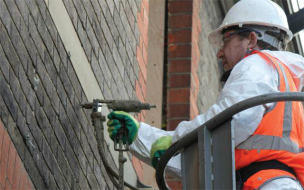The result of the latest consultation on The Energy Company Obligation (ECO) concluded that hard to treat cavity walls should be eligible for ECO funding under the Carbon Saving targets. This change recognised both the number of structures in this category and the potential CO2 savings that could be achieved by treating them effectively – a significant opportunity for effective solutions such as WALLTITE.
This is a huge potential market: DECC’s own recently-published figures indicate that there are over three million houses in the UK with hard to treat cavities.
And, just for the record, hard to treat cavities are defined as:
- Masonry cavities less than 50mm wide
- Prefabricated concrete construction systems with cavities
- Metal frame construction systems with cavities
- Random stone cavities
- Timber frame studwork cavity
- Buildings More than four storeys tall
- Walls exposed to severe wind driven rain
The opportunities for contractors as ECO funding comes fully on-stream in January are immense. The difficulty is to find the best insulation method.
BASF recognised that WALLTITE spray foam insulation would be an ideal solution and worked to develop a new formulation specifically for this type of application.
The new formulation remains in liquid form for fractionally longer, allowing the WALLTITE to work its way around unevenesses in the wall structure before expanding into its final foam state. This avoids the problems associated with blown insulation materials that can easily snag on rough internal faces and settle over time, reducing performance.
Users of WALLTITE also report that the additional structural stability achieved through using WALLTITE provides a compelling advantage. As the foam bonds permanently to both walls, the treated structure has increased structural stability – providing additional reassurance when the original wall ties have (or may have) failed.
WALLTITE will adhere to any substrate material, allowing it to be used in all the wall types identified as hard to treat. Used in a 40mm cavity WALLTITE CV 100 should give a U value 0.46W/m2K
BASF is gearing up for a significant rise in demand for WALLTITE used in this application and is working with its fully trained Foam Master contractors to make sure they are completely up to speed both with the technical issues relating to injection application and with the scale of the potential work on offer.
Contractors or specifiers wanting to find out more about this issue should contact Bilal Mohyuddin at WALLTITE on 01773 601166 or bilal.mohyuddin@basf.com





